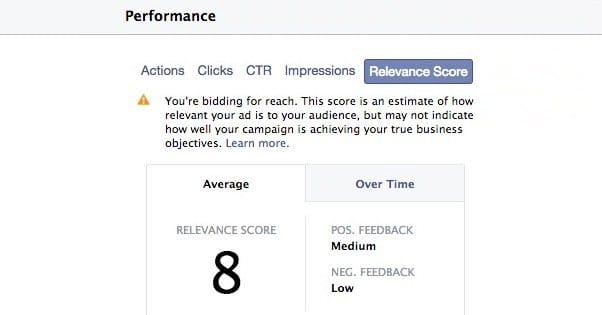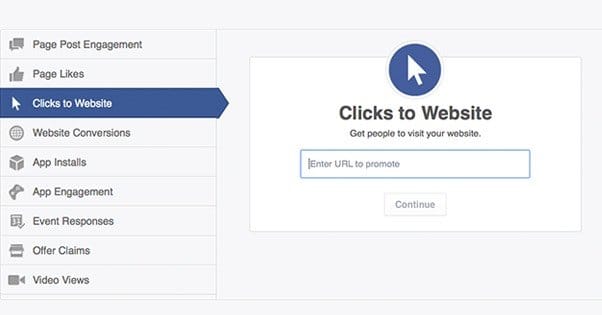 Written by ContentPowered.com
Written by ContentPowered.com
Any time you’re running PPC advertising, the number one concern you have is generally going to be cost. Sure, there are some potentially more important metrics, like the conversion rates of your ads, but those require a little more thought and a little more analysis to question. Cost is pretty easy; you just check your budget and your bank statements. You check the metrics Facebook provides right up front, the cost per thousand views, or cost per action, or cost per conversion, depending on what type of ad objective you’re using.
While the title of this post indicates we’re talking about CPM ads specifically, everything I mentioned below will have some application to every form of ad bidding. In fact, I might as well take a moment to give you a rundown on the different forms of ad bidding available on Facebook.
To start, I want to mention oCPM, which is Facebook’s optimized cost per mille, which is the cost per thousand views style of bidding. CPM are the general “pay per view” ads you see anywhere on the web. You’re charged a bit of money every view, but it’s generally lumped by the thousand, so no one has to deal with fractions of pennies. Facebook’s oCPM and CPM were two different bidding styles, with oCPM being the better of the two due to some general optimizations, but Facebook removed this option near the end of last year.
These days, you effectively only have two options, the CPC and CPM. However, you can’t simply pick which one you want for your ads. Your bidding style is determined by your ad objective, along with a few other things, like some on-site optimizations in terms of what audience sees your posts preferentially.
The choice you have today when creating Facebook ads is to go with automatic bidding or to choose manual bidding. Automatic bidding allows Facebook to find what it considers to be the best price for your ads, though it may be higher than what you consider to be the ideal price. Facebook might figure a $4.48 CPM is good, but you prefer to never go above $3 for it. If you find this to be the case, you can choose manual bidding, which will allow you to set that bid to $3. However, when doing so, you run the risk of being out-bid and losing the most potentially valuable impressions on your ads.
As I mentioned, each ad objective has its own form of delivery. Here are some examples, though you can see all of them in Facebook’s help center.
- Boosted posts have the option to optimize for post engagement, for impressions, or for daily reach, and you can be charged for either post engagement (as a CPA charge) or impressions (as a CPM charge.)
- Ads with the website conversion objective can be optimized for conversions as tracked by the Facebook Pixel, for the raw number of link clicks, for the impressions on the ad, or for daily unique reach. They can be set to charge you per link click as CPC, or impressions as CPM.
- Ads for apps can be optimized for app installs or for link clicks on the ads themselves. You can then be charged per impression, per click of the link, or per install of the app.
- Ads with strict geolocation designed to reach local users for your business can only be optimized for daily unique reach, and the only charge option is CPM, impression tracking.
The bidding style is just one of many factors that goes into calculating the cost of your ads, though, and as long as you’re going with what makes the most sense for your ad objective, you can’t really optimize it to be any cheaper. So let’s take a look at what CAN make your ads cheaper, or what is making them expensive in the first place.
Your Audience Choice
Possibly the biggest influencing factor on your ad costs is going to be your choice in audience selection. Your audience is the group of people who fit the criteria you choose in ad targeting. You could, for example, target all females on Facebook. That will be an extremely broad audience, though, and while your ad costs might be cheap, the chances of you getting any significant results out of them will be slim to nil. By contrast, you can target females age 18-25 with 0 kids, an interest in baseball, and an annual income over $50,000. That’s a much more specific and potentially relevant audience, but will be more expensive to reach.
Different audiences will cost more. If your audience includes countries outside of America and a handful of other English-speaking nations, it’s going to be much cheaper and much less relevant. If you’re limiting your audience to your geographically local area with other demographics besides, it’s likely to be quite expensive.
The reason is competition. You’re not just competing with other stores in your industry for the attention of this audience. Any one audience might be targeted by shoe stores, restaurants, sporting goods stores, online retailers, cosmetic stores, and all the rest. Think about the wide variety of billboards along a highway; a large number of different interests, all targeting the same audience – the people on the road.
You need to strive for the right balance. Too narrow an audience and you crank up your ad expenses for comparatively little value. To broad an audience and you end up with ultra-cheap ads – even penny click ads – but no conversions.
Your Ad Relevance Score
The most important metric as far as Facebook is concerned is relevance score. This is a score Facebook gives your ads individually, and a sort of aggregate average across all the ads on your account.
Relevance score is calculated based on expected interactions between your ads and your audience. Ads that Facebook considers irrelevant are likely to be marked as spam or hidden by users. Ads that are considered relevant are likely to be clicked, engaged with, shared, or otherwise positively interacted with. Facebook gives you an estimated score when you create an ad, and will adjust the score based on real engagement and interaction once the ad is live. A higher relevance score is, obviously, better.
Facebook doesn’t hide the fact that a higher relevance score on your ads is a direct correlation with cheaper ad costs.
The less relevant your ads, the more negative engagement and the less positive engagement they will receive, and the higher your costs will be. This is why ads that try to use irrelevant clickbait and sex appeal are generally ranked quite low and cost a lot to run.
I would caution you not to experiment too widely with ad relevance. Facebook factors in your relevance history when they calculate the overall relevance of your account. The higher your ads are in general, the more likely you are to get a higher score out of the gate when creating a new ad. If you’re deliberately making poor ads to test relevance score, you might be hurting all of your ads over the course of months.
Your Objective Optimization
Your choice of ad objective is going to be very important. One reason is all of the introductory stuff above; it determines your options for bidding. There’s more to it than that, though.
If you want ads that you pay for exposure, the basic CPM model, most of the ad objectives have that option. In theory, you could choose any objective and run CPM ads, and you would get exactly what you’re paying for. People would see your ads, you would pay for them seeing your ads, and anything else is a bonus.
The reality is that even with the same audience targeting options between them, each different ad objective is going to be shown preferentially to different sets of users. Now, if your ad targeting is narrow enough and your budget is high enough, you could reach 100% of the users in the audience regardless, but you’ll get less preferential treatment along the way.
It’s generally easier, cheaper, and more beneficial to you to choose the right objective for your purpose. If you want to build your brand name, choose ads that aim for page likes, for clicks to website, or for brand awareness. If you want to collect opt-ins for your newsletter, choose something like website conversions or lead generation ads. If you want to get people to install your app, use the app installation ad objective. You can see the full list of ad objectives here.
Your Ad Frequency
Ad frequency is the measurement of how often any one specific user within your audience sees your ad. In theory, a frequency of 1 means that every user in your audience has seen your ad exactly once. Now, “seeing” the ad might mean very different things to different users. One user might see it and give it a lot of attention. One user might see it and scroll past it without really reading it.
Frequency is also deceptive, because it’s not an actual measure, it’s an average. If you have an extremely narrow audience of 2 users, a frequency of 1 would mean each one saw the ad once. Or, because of how averages work, one of the users could have seen it twice and the other not seen it at all. In larger audiences, this is how it tends to be. In an audience of 100,000 people, some people might not even log in during the duration of your ad. Some might be on all the time and refresh their page several times, and see your ad five or six times. Some might be middle of the road and only see the ad once or twice.
A frequency of 3 is generally a good goal for most ads. If your frequency is too low, you’re not reaching your whole audience, and you’re missing opportunities. This can be an indication of too low a budget, too broad an audience, or ads that don’t run long enough. A frequency of higher than 3, however, generally means that users are seeing your ads too often. They will start to become irritated by them, and will develop negative feelings about this brand spamming their feed. They’re more likely to take negative action against your ads, and as a consequence, you’re going to see lower relevance scores.
The Time of the Year
Sometimes, your ad costs will rise despite not doing much of anything to change them. The primary reason for this is typically seasonality. Certain times of year tend to have more advertising than others.
For example, any audience even vaguely interested in sports is going to be part of the audience targeted by a huge number of companies around the Superbowl. Superbowl themed ads will run rampant, and the competition will drive up prices all around.
The most common example and one you’ll likely immediately recognize from your own costs is the holiday season. Black Friday, Cyber Monday, and all of the lead up to Christmas are dense with advertising. Everyone, it seems, cranks up their ad budgets and broadens their audience to reach as many people as possible. Costs go up across the board, because there’s only so many available ad slots, and with more ads and more ad spend, something has to give.
Competition in general is another factor, but it’s tricky because you can’t really measure it. Competition isn’t measured in terms of industry, it’s measured in terms of audience. It doesn’t matter if you’re the only brand making shoes advertising to your audience, because you’re still competing with all of the food and health and clothing and travel advertisers trying to reach those people.
Lowering costs is the eternal quest of the marketer, but you might also want to take a look at the other side of the equation as well. Low costs don’t help if you have zero conversions for your objective, after all. Instead of focusing entirely on high costs, consider what you can do to make each individual visitor more lucrative to your brand. Attack the problem from both ends.







